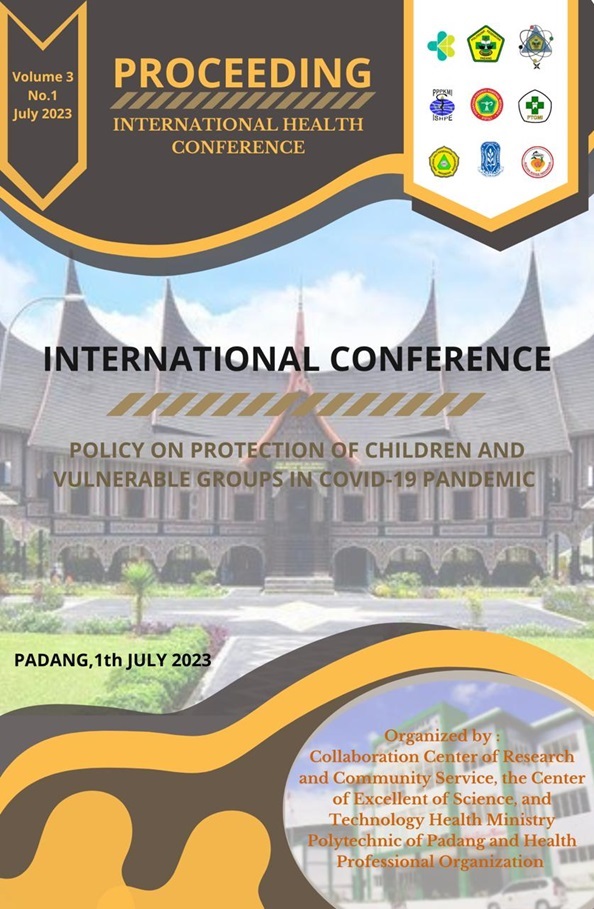Dietary Modelling in Increasing Cardiorespiratory Resistance the Student of Education and Training Center
Abstract
The Sport Development Index (SDI) survey in 2006 reported that the fitness level of students in Indonesia tended to be low. Dietary factor is among the most important determinant for cardio-respiration resistance. This study aims to develop a dietary model to increase cardio- respiration resistance of athletes at Student Education and Training Center (SETC) in Padang, West Sumatra, Indonesia. This study used a cross sectional design. The population is all students of SETC as many as 77 people. According to the inclusion criteria, a sample of 46 people was obtained. Sampling is done by simple random sampling method. Primary data collection includes data on characteristics, cardiorespiratory resistance, energy intake, fe intake, and physical activity. Data were analyzed univariately uses descriptive statistical measures. Bivariate analysis uses the Pearson and the Spearman correlation test. The results obtained an average cardiorespiration resistance of 102.8, energy intake of 2957.9 kcal, carbohydrate intake of 447.8 grams, protein intake of 105.7 grams, fat intake of 85.9 grams, intake of fe 11, 5 grams and physical activity averaged 8,1. Pearson correlation test results had a significant relationship between energy intake, carbohydrate intake and fat intake with cardiorespiratory resistance (p <0.05). Multiple linear regression test obtained a model equation to increase cardiorespiratory resistance with one independent variable, Cardiorespiration resistance = 71,324 + 0.070 carbohydrate intake. After calculating the needs according to the type of exercise, a significant relationship was found between the needs and resistance of cardiorespiration. It is hoped that the results of the equation found and can be applied by SETC.
Downloads
References
Afriwardi. (2011). Ilmu Kedokteran Olahraga. Jakarta: Ilmu Kedokteran EGC. Antony, Aśok C. (2011). Megaloblastic Anemias. Vol. 1. Twenty Fou. Elsevier Inc.
Arsenault, Joanne E., Mercedes Mora-Plazas, Yibby Forero, Sandra Lopez-Arana, Germán Jáuregui, Ana Baylin, Paul M. Gordon, and Eduardo Villamor. (2011). “Micronutrient and Anthropometric Status Indicators Are Associated with Physical Fitness in Colombian Schoolchildren.” British Journal of Nutrition 105(12):1832–42.
Broersen, Jalien and Danielle Dull. (2011). “The Association of Folate or Vitamin B12 Intake with Physical Performance in Elderly People.” B-PROOF Subproject Cross-Sectional Study about the Association of Folate or Vitamin B12 Intake with Physical Performance in Elderly People with an Elevated Homocysteine Level (January):1–26.
Danardono. (2011). “Jasmani Fitness For Athletes.”
Diana, Ditha, Bastaman Basuki, and Jull Kurniarobbi. (2009). “Low Physical Activity Work- Related and Other Risk Factors Increased the Risk of Poor Physical Fitness in Cement Workers.” Medical Journal of Indonesia 18(3):203–7.
Hoch, Anne Z., Katie Goossen, and Tricia Kretschmer. (2008). “Nutritional Requirements of the Child and Teenage Athlete.” 19:373–98.
I.I lyas, Ermita. (2004). “Nitrition For Athlete.” Gizi Medik Indonesia 3.
L, Mihardja. (2004). “Sistem Energi Dan Zat Gizi Yang Diperlukan Pada Olahraga Aerobik Dan Anaerobik.” Gizi Medik Indonesia 3.
Lubis, Haslan Muhaimin and Delmi Sulastri. (2015). Hubungan Indeks Massa Tubuh Dengan Ketahanan Kardiorespirasi, Ketahanan Dan Kekuatan Otot Dan Fleksibilitas Pada Mahasiswa Laki-Laki Jurusan Pendidikan Dokter Universitas Andalas Angkatan 2013.” Jurnal Kesehatan Andalas 4(1):142–50.
Otten, Jennifer J., Jennifer Pitzi Hellwig, and D. Linda. (2006). Dietary DRI Reference Intakes. Pasiakos, Stefan, John W. Carbone, James P. Mcclung, and Stefan M. Pasiakos. 2017. “Skeletal
Muscle Responses to Negative Energy Balance : Effects of Dietary Skeletal Muscle Responses to Negative Energy Balance : Effects of Dietary Protein 1 , 2.” (January).










